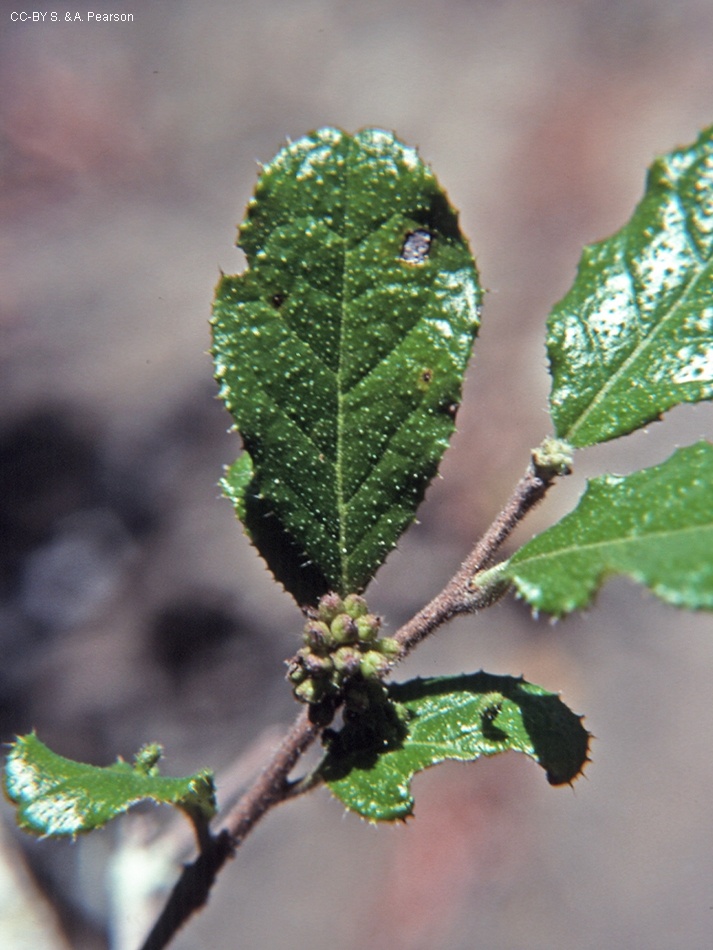Australian Tropical Rainforest Plants - Online edition
Ehretia grahamii Randell


Randell, B.R. (1993), New taxa and combinations in the Boraginaceae. Journal of the Adelaide Botanic Gardens 15(2): 94-95, Fig. 1, Map 1 [tax. nov.]. Type: Pine Mountain, State Forest 79, P.I. Forster 7998 & W.J. MacDonald, 21.iv.1991 (BRI); iso: K, L, MEL, QRS.
Rough-leaved Koda
Shrub 1-4 m tall. Young branchlets hairy with short to long spreading hairs, glabrous with age.
Leaves simple, alternate, stipules absent. Petiole shallowly channelled on upper surface, 2-5 mm long. Lamina elliptic, oblong or ovate, 1.5-6 cm long, 1-4 cm wide, base obtuse or cuneate, margin dentate, apex obtuse to acute, occasionally emarginate. Midrib and lateral veins depressed on the upper leaf surface. Upper leaf surface scabrous with cystolith-based hairs, lower surface densely hairy with long erect hairs.
Inflorescence axillary or terminal on short laterals, flowers bisexual. Flowers 5-merous. Calyx 1.5-3 mm long, shortly fused at base, lobes lanceolate and acute. Corolla 3-4.5 mm long, bell-shaped (campanulate), lobes recurved at apex, white to cream. Stamens 5, exserted, alternating with petals and attached to corolla tube; ovary superior, style with two short branches to 0.2 mm long.
Fruits fleshy, globular, about 5-6 mm long, 5-7 mm diam., orange to red when mature, reported in literature as separating into 4 1-seeded nutlets.
Features not available.
Occurs in CEQ, from southwest of Townsville to Gladstone. Altitudinal range from 0-560 m. Grows in dry rainforest communities.
Differs from other Australian species in that the leaves are unusually small and their upper surfaces have scabrid cystolith based hairs.





